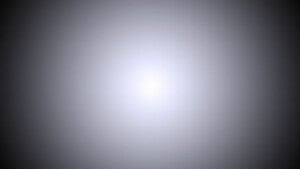Celebrate 25 Years of Hubble With This Warp Speed Tour of the Spectacular Gum Nebula

Share
When our ancestors looked up at night, they saw the star-studded dome of heaven. It’s easy to understand why they thought this. Even today, gazing at the sky, the stars appear fixed on a gently curved surface.
Of course, they aren't. Astronomers can measure stellar distances and place stars in three dimensions. But we don’t viscerally experience the universe’s dimensionality, not like we might wandering through a cluster of fireflies. And truth is, we may never experience it. The universe is too huge, and we're too slow.

This is what it would look like if we could travel near the speed of light. (Credit: University of Leicester.)
Even if our ships (impractically) approached light speed, we wouldn’t see stars at all. The doppler effect would shift incoming starlight out of the visible spectrum. Instead of stars, the diffuse cosmic microwave background, its light crunched into visible wavelengths, would appear to us as a glowing ball of light.
We may not experience the universe in three dimensions any time soon—but in the digital realm? Recently, magical things have been happening there.
By stitching together high-resolution images and assigning compressed distances to objects, we can tour "scientifically reasonable" visualizations of the galaxy at what appear to be speeds faster than light.
Celebrating a quarter century of Hubble, NASA and ESA recently released images of the Gum Nebula and Westerlund 2, a stellar nursery with 3,000 of the galaxy’s biggest, hottest, and brightest young stars. The stills are spectacular as ever—but the video is better. For 25 years, Hubble's unveiled a universe almost unimaginably vast. Now, with a little digital wizardry, we can travel those cosmic distances at warp speed.
Be Part of the Future
Sign up to receive top stories about groundbreaking technologies and visionary thinkers from SingularityHub.


Here's the Hubble team's description: "The flight traverses the foreground stars and approaches the lower left rim of the nebula Gum 29. Passing through the wispy darker clouds on the near side, the journey reveals bright gas illuminated by the intense radiation of the newly formed stars of cluster Westerlund 2. Within the nebula, several pillars of dark, dense gas are being shaped by the energetic light and strong stellar winds from the brilliant cluster of thousands of stars. Note that the visualization is intended to be a scientifically reasonable interpretation and that distances within the model are significantly compressed."
Video Credit: NASA, ESA, G. Bacon, L. Frattare, Z. Levay, and F. Summers (Viz3D Team, STScI), and J. Anderson (STScI). Acknowledgment: The Hubble Heritage Team (STScI/AURA), A. Nota (ESA/STScI), the Westerlund 2 Science Team, and ESO. Music: “Francis Bacon, Georges Bataille, Gilles Deleuze, Marcel Duchamp, William Burroughs” (by Breathing Space) - Creative Commons License. Image Credit: NASA and ESA; University of Leicester
Jason is editorial director at SingularityHub. He researched and wrote about finance and economics before moving on to science and technology. He's curious about pretty much everything, but especially loves learning about and sharing big ideas and advances in artificial intelligence, computing, robotics, biotech, neuroscience, and space.
Related Articles

Data Centers in Space: Will 2027 Really Be the Year AI Goes to Orbit?

Scientists Say We Need a Circular Space Economy to Avoid Trashing Orbit

New Images Reveal the Milky Way’s Stunning Galactic Plane in More Detail Than Ever Before
What we’re reading
